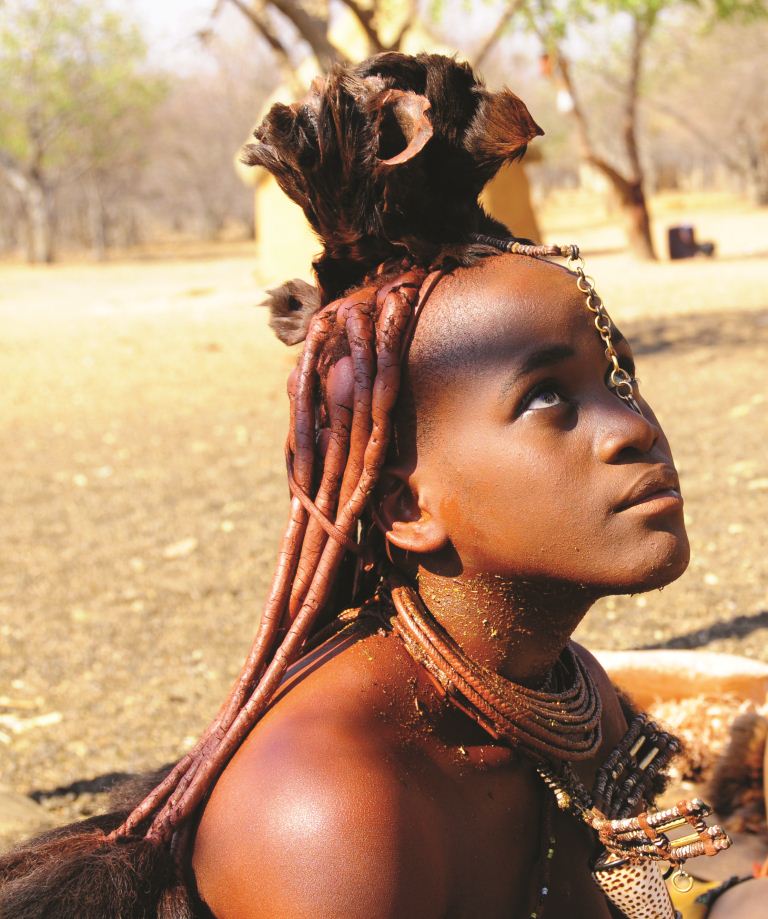A long trek through the parched mopane woodlands of Koakoland, in northwest Namibia, takes me to Otjikandero village, where I get a glimpse of Himba lifestyle. What impresses me is the cleanliness of the circular village, surrounded by the veld in an idyllic setting. Most Himba villages offer such visits for a small sum of money, like the Masaai of Tanzania do. This has helped them lead a sustainable lifestyle seen nowhere else.
These pastoral people live in communities of less than a hundred people. Himba women are known for smearing themselves with otjize, a paste of butter, fat and red ochre giving their skin and hair a reddish hue whilst also protecting them from the sun. The skin presumably symbolizes the color of the earth and of blood.
My guide during my 3,000 mile travel through southern Africa is a young lady from Cape Town. The Himba teenagers connect with her at a personal level. They touch her white face and feel her straight hair, while I am equally fascinated by their wonderful headdresses and ochre complexion.

Whereas the very young girls have braided hair falling in front of their faces, at the onset of puberty, they wear longer plaits loosely around the head. I am also told the hair is used as a veil to hide their shyness during those years. After puberty, the girls partake in a special ceremony, when their hair is washed and they are given the traditional ekori headdress made from tanned goatskin. After marriage, all women wear the erembe headdress, made from the skin of a goat’s head and fastened by leather thongs. They also wear hair extensions adorned with goat skin.
Loading...
Bath Huts
Every Himba village has a ‘bath hut’ where women take turns to ‘smoke’ themselves with aromatic herbs. I am given the privilege to see one such demonstration. A young girl waves a small coal stove containing the smoke of aromatic herbs under her elaborate headdress for several minutes, then covering herself with a towel, and also smoking her torso and lower body parts. She then rubs herself with the otjize paste and emerges from the bath hut looking transformed.
The Himbas spend considerable time adorning themselves. They wear beaded necklaces that they craft themselves. Their chunky copper and silver anklets prevent them from snake bites as they walk in the bush.
Using the body as a canvas has been a vital part of ancient life the world over. Africa in particular is home to some of the most fascinating body art: skin painting, facial scarring, magnificent hairdos, lip and earlobe extensions, to name a few. The practice of body art was mostly predominant in Africa and meso-American cultures. As ancient practices are vanishing everywhere, the west has rediscovered body decorations by way of tattoos and piercings. A torch has thus been passed from the ancient to the modern era.
Unfortunately, I could not photograph any of the men since they had left the village to graze their herds. The Otjikandero village has adopted a few AIDS orphans from neighboring areas and raised them in the Himba tradition. I saw several of them playing. They all sported single plaited hairdos on shaven heads.

Before I bid farewell to these unique people, I visit the common kitchen and donate the 10 kilograms of rice that has traveled with me on a journey through souther
Loading...
